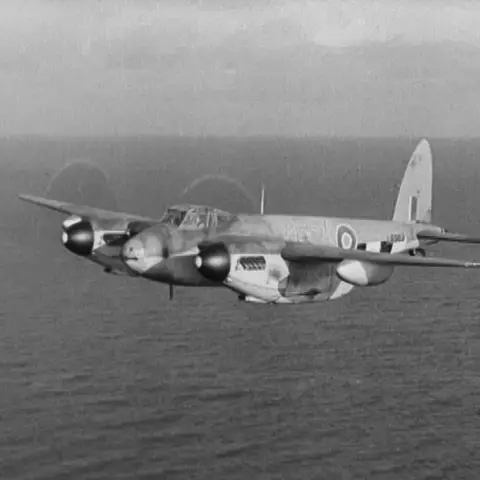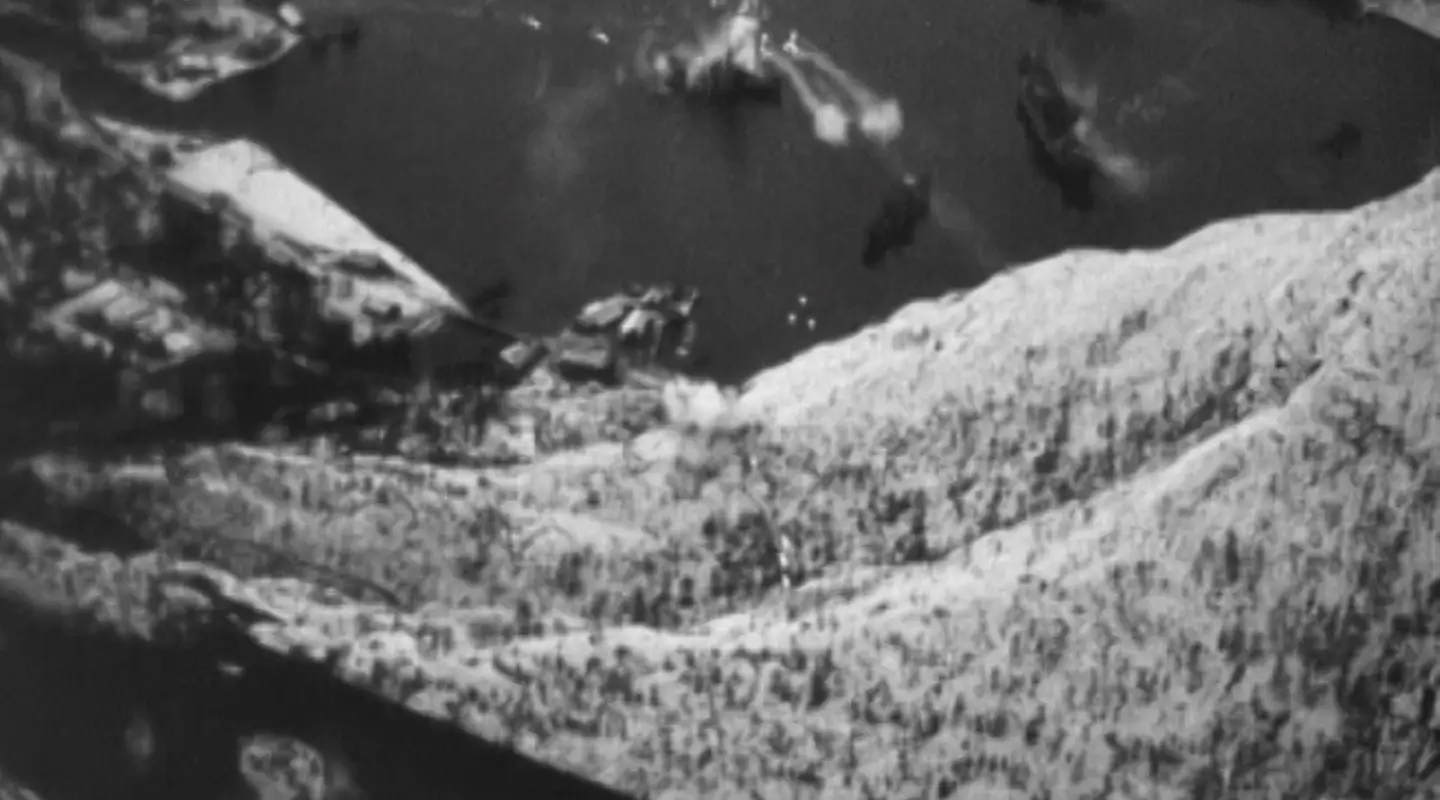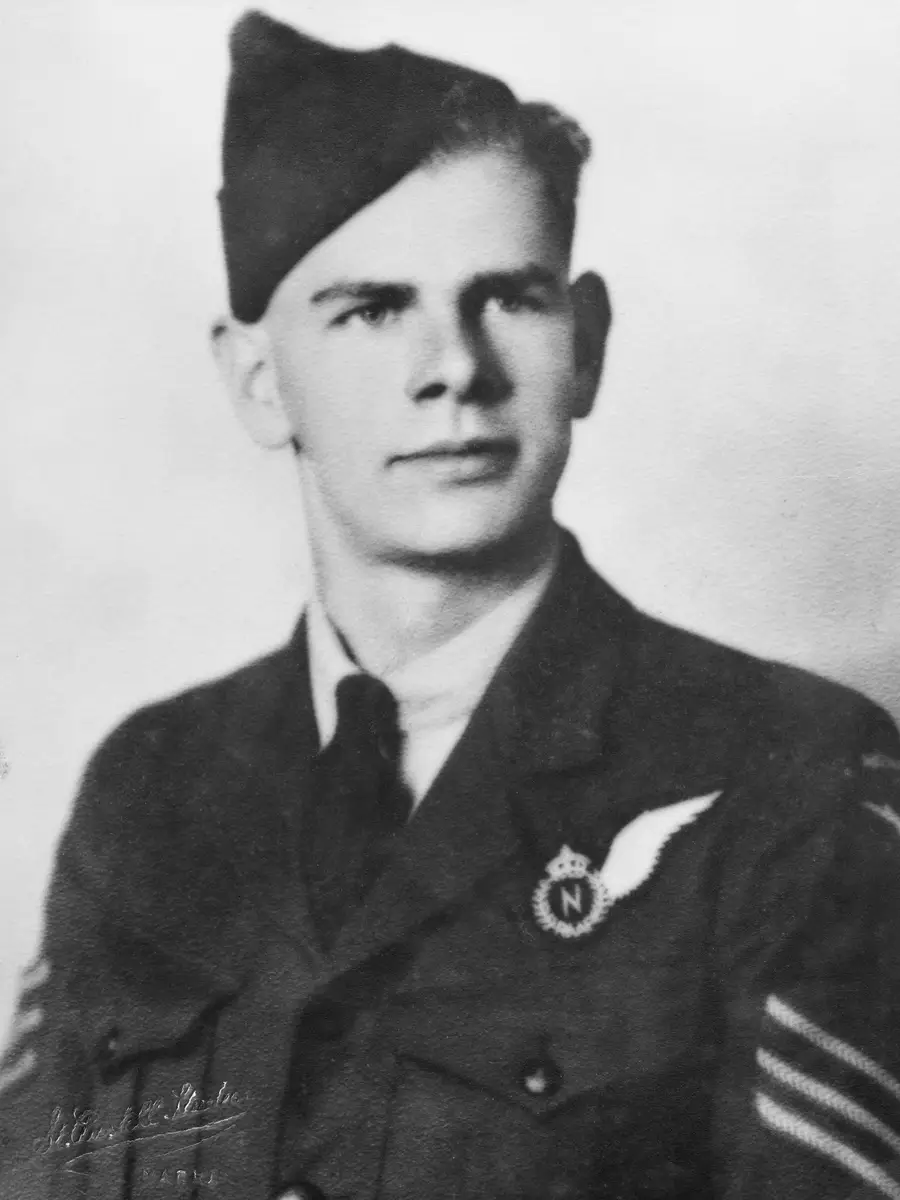The film “Enemy shipping in fjord at Norgulen” highlights the incredible skill of the Australian and British crews of Coastal Command and the dangerous conditions they faced.
On 5 December 1944, Coastal Command launched a combined mission to Nordgulen Fjord in Nazi occupied Norway. Thirty-four aircraft of the Banff Strike Wing, along with the crew of the Royal Air Force Film Unit, took off from Scotland at 11.50, arriving over the towering mountains of the fjord in just under two hours. They would navigate treacherous conditions and weather enemy fire to sink four German merchant vessels. The steep terrain of the fjords was always a severe challenge. According to the original film dope sheet, “the aircraft dived from a height of 5,000 ft to mast height at an angle of 45 degrees at a speed of over 300 miles an hour."
Coastal Command is generally less well known than some of the famous Bomber Command squadrons. Yet the contribution of Coastal Command’s crews to the war effort was substantial. Their anti-shipping campaign severely hindered supply lines the Germans had established in the Atlantic and the North Sea, stopping crucial resources from reaching the Axis powers.
German ships used the rugged and dense mountain terrain surrounding Norway’s fjords to hide from Allied air raids. Mosquito de Havilland DH 98’s of Squadrons 248, 143 and 235 are seen in the film, weaving through the steep snow-capped mountains of Norway’s fjords to attack four German merchant vessels: the Ostland, Tucuman, Magdalena and Helene Russ. Known as the ‘wooden wonder’, Mosquitoes were extremely lightweight wooden aircraft, well suited to anti-shipping raids. Special models of the Mosquito, known as Tsetses, were used by 248 Squadron, equipped with a 57mm machine-gun.
“Enemy Shipping in the Fjord at Nordgulen” shows direct engagement with merchant vessels and flak ships, the pilots skilfully dodging and out-manoeuvring enemy fire. Yet after the war, misconceptions arose that Coastal Command ran only defensive operations, relegated to the sidelines of reconnaissance. Archival research is also challenging the perception that they rarely found or destroyed any German naval vessels.
Enemy shipping in fjord at Norgulen. The film shows the active combat role that Coastal Command played.
In an AWM oral history interview, RAF No 547 Squadron navigator Thomas Fitzgerald, described their comprehensive training program, including map reading and Morse code. He also explains that “we learned, at least on paper, to recognise the silhouettes of virtually the whole German and the whole British fleets, down to the destroyer class.”
Yet he also recounts his hopes of being assigned to Bomber Command and his disappointment when it did not happen. People were not especially interested in his posting: “I had to say, very apologetically, ‘I’m in Coastal’. And then a glazed look would come over their eyes, they would cease to be interested.
Listen to the full audio interview AWM S00536.
Despite Fitzgerald’s experience, he and other Coastal Command crew made vital contributions to the war effort, cutting off Axis supply routes and resources. Coastal Command being historically overlooked, films such as F02578 show that their pilots and navigators were just as well trained as the crews of Bomber Command and faced similar dangers.

Mosquito de Havilland DH98 (Tsetse)

Mosquitos from Sqns 248, 143 & 235



